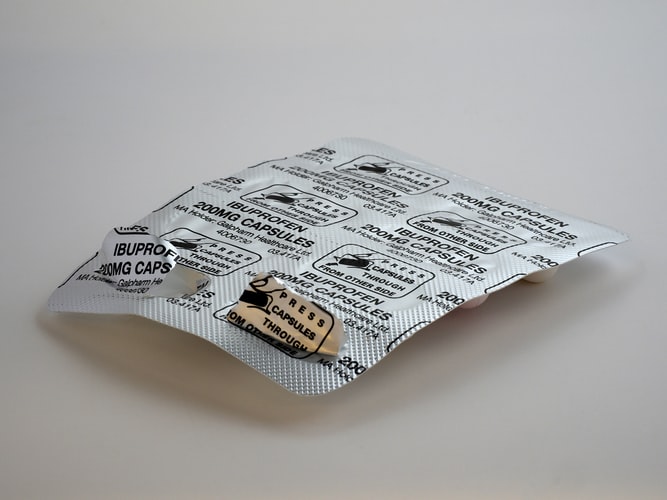Do you take ibuprofen for muscle and joint pain on a regular basis?
Perhaps even every day?
May I inquire how that has been working for you? What if I told you that, while you may experience temporary relief, over the long haul, you are actually making your joints worse?
The good news is, there are alternatives. Read on to find out more!
Focusing On Nutrition
There are foods that you can add to fight inflammation as well as foods you can avoid, that cause inflammation. Below are some great ideas:
| Foods to Include | Foods to Avoid |
| Tomatoes | Refined carbs: bread, cake, pasta |
| Olive Oil | Soda: all, especially diet soda |
| Nuts/Seeds: Almonds, walnuts, flex & chia seeds | Fried foods |
| Fruit: Strawberries, blueberries, oranges, cherries | Margarine |
| Leafy greens: Spinach, kale, collards, etc | Red meat |
| Fatty fish: Salmon, mackerel, tuna, sardines | Processed meat |
| Bone broth | Excessive alcohol use |
Taking Natural Supplements
Another way to help reduce inflammation is by taking natural supplements. All of the supplements listed below will work to help reduce systemic inflammation (which is the inflammation we have throughout our body). Some of them even work specifically to help with the pain associated with arthritis.
Natural Supplements to reduce inflammation include:
Alpha-Lipoic Acid, Curcumin, Fish Oil, Ginger, Resveratrol, Spirulina
The list of foods to include in the chart above, all help too! Bone broth, for example, contains healthy minerals, amino acids, gelatin, and collagen. All of which are good for muscle and joint support!
Movement is Life so Get Moving!
While certain exercises, such as weightlifting, can contribute to increased muscle and joint pain, a good axiom is that muscles and joints that don’t move or that move very little are generally stiff and achy. To make matters worse, it gets worse over time.
We can change our lifestyle to include more activities that promote healthy muscle and joint function. To make this manageable, we can break this down into three categories: strength-training, cardio, and stretching. All three should be done but please…start slowly, especially if this is new to you. In fact, if it has been a while since you’ve been active, it is always a good idea to get your annual physical before jumping into anything here.
- Strength-training – True that some people lift weights to change their physique. For the point of our discussion here, we are more concerned with strength training to improve posture and to keep muscles healthy. Relative to posture, our primary focus should be on two things; core-strength and upper back strength.
- Core strength exercises will provide better support to your pelvis and lower back, which trickles up to the rest of our spine.
- Upper back strength training is essential to help stop that hunched over look. If you are like most people, you spend a good portion of your day hunched over your cell phone or computer. You undoubtedly also have developed a slight slump with driving. Once your 10 to 12-pound head projects a little forward, then your neck and upper back muscles must work hard to hold it there. My favorite exercises to help this are:
- Bent-over dumbbell rows.
- Reverse sit ups. While lying face down, raise your head and shoulders off the floor; trying not to tilt your head back.
- Lie face up with your knees bent, feet flat on the floor. In this position, raise your pelvis off the floor as high as you can go, pumping it a few times at the top. This will release muscle tension in your buttocks.
- Cardio – Another muscle that can always use a little strength training is our heart. As the name implies, cardio is the way to go. Research has shown that intermittent or burst exercise increases the effectiveness of cardio. This is also known as Tabita exercise and is all about brining your heart rate up for one minute and letting it come back down by resting for three minutes. Increased cardiac function will help with your arthritic pain by lubricating your muscles and joints. The increased heart rate will also serve to flush toxins from your system.
- Stretching – Stretching is essential for good joint health. Cats, dogs, and other animals instinctively know the benefits of stretching, which is that muscles and joints get tight and achy if they are not stretched.
Include chiropractic care and massage
While stretching is important, it really does not get deep enough. This is where chiropractic and massage comes into play. Chiropractic adjustments will help restore joint mobility, while massage gets into releasing deep muscle tension. Both are good.
For additional information and to see if we can help, please give our office a call. We would love to help you.
For Better Health, Naturally
![]()
Peter A. Holst, DC

